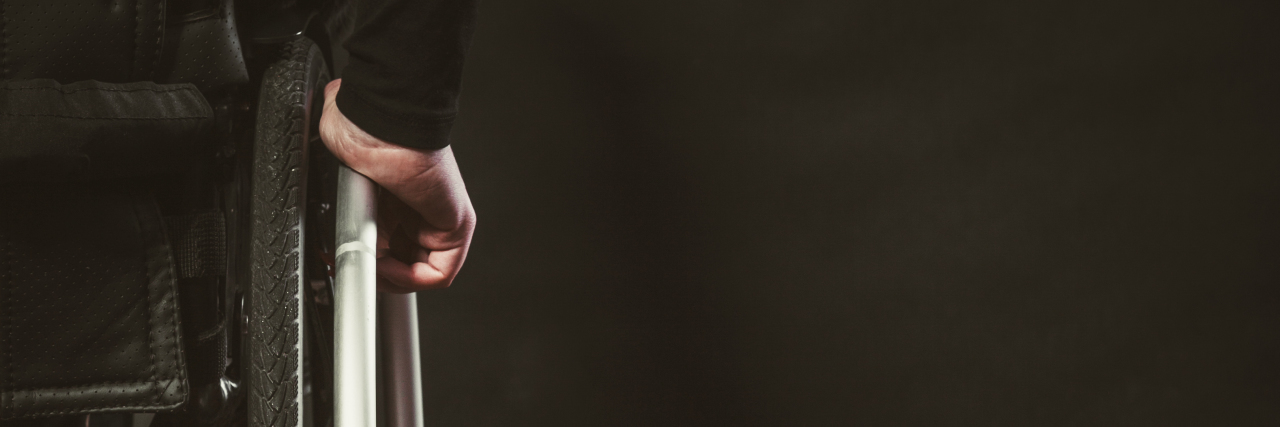I got the urge to write this essay because I was angry. I listen to a lot of podcasts, and one of my favorites discusses stories that haven’t been told often enough, thoroughly enough, or accurately enough. Occasionally, the hosts of this podcast tell the stories of historical figures with disabilities. When disability comes up, the hosts discuss the medical and social models of disability. I heard these models discussed as if the social model should replace the medical one.
I’m not writing this essay to complain about that podcast episode or that podcast in general. Lately, in many forms of media, I feel like it has been suggested that the social model of disability should replace the medical model. Whether the sources in question intend to suggest this, the implication makes tense and sweaty with frustration. I feel unheard. I feel that favoring one view of disability over another ignores certain aspects of my experience as a person with cerebral palsy.
I’ll explain why, but first, in case you’re like me and haven’t always been clear on what the models are, I’ll define them. The medical model of disability, according to Wikipedia, views conditions we often gather under the umbrella of disability as problems to be fixed. The social model of disability, according to the same Wikipedia entry, defines disability as a condition created by biases and barriers in society.
This model makes a distinction between disability and impairment. The characteristics of a person’s condition are discussed as forms of impairment. The model suggests that if biases are overcome and access barriers are removed, a person with impairments will have less of an experience of being disabled. Having impairments is a condition, while having a disability is an experience — one that can change, even if the person’s condition does not change.
According to the Wikipedia article on the social model of disability, the model’s originator, Mike Oliver, a disability studies pioneer from the U.K., stressed that the model was not intended to encompass the entire experience of disability. I looked up the social model on Wikipedia after the podcast episode riled me up, and once I did, I was relieved that Mr. Oliver seemed to be aware of the limitations of this model.
When I’m angry, or frustrated, or excited, the combination of cerebral palsy and emotions can leave me sore — injured for weeks even. Yet having emotions is a part of being human. I can’t and shouldn’t try to avoid them. All the ramps in the world, all the power wheelchairs, all the accessible bathroom stalls don’t change this aspect of my experience. Muscle relaxers and other treatments, while helpful for spasticity, wear off, and they have side effects. Medications, building modifications and changing attitudes haven’t made me able to get around independently, feed myself neatly, dress myself, wash many areas of my body, or use the restroom by myself.
Sure, people and their understanding and the devices and medications they make can help me navigate life. I make the best of my circumstances with the help I have. I do what I can for myself. But the fact is, I’d like to hurt less. I’d like to be able to do more by myself and in shorter amounts of time. The fact is cerebral palsy is the result of a brain injury. This injury scrambles communication between my brain and my muscles. My muscles 1) don’t always get the message about what I want to do or 2) my muscles misunderstand which of them is supposed to do what when. In response to this confusion, they all try to do everything. They get a lot less done than I would like because they aren’t “focused” on specific tasks, you might say. My point is this: if someone could heal my brain and rewire the connections between my brain and my body, I’d be fine with that. More than fine. Ecstatic. Fix the problem that is my cerebral palsy. Go ahead.
You can’t?
I understand. Though I live with cerebral palsy, I’m grateful for my life. I’m grateful for the chance to choose how I respond to life’s challenges, the chance to turn difficult times into learning experiences. And I’m grateful for the therapies, the advances in technology, the accessible facilities and the caretakers in my life. I’m grateful to those who work to increase accessibility in all its forms. I’m glad to be able to express this gratitude, as well as my perspective.
Many factors make a person’s perspective unique. According to Wikipedia, the social model of disability resonates with some people because they see their condition as a part of what makes them unique, rather than something broken that needs to be fixed. The person just needs the means and permission to interact with the world differently. Of course, CP is part of what makes me unique. CP has influenced the person I’ve become, and it will continue to influence the choices I make and how I see the world. However, I see CP as influencing me the way that gravity affects all of us. Gravity acts on me, but it isn’t a piece of me. If I didn’t live with CP, I would still be unique, as would everyone else.
I have to try to understand where the thoughts and feelings of others are coming from, though others’ perspectives may be different from mine. Understanding that reaches in several directions is key to overcoming the various challenges all of us, as humans, face in our own ways. To me, the reality that we all face challenges differently means we need to grapple with both the medical and social implications of what it means to have a disability. The narrative surrounding disability is incomplete when we focus on one model at the expense of the other. Experiences of disability are complex and varied. So now that I’ve had my say, how you view your condition(s)?
Getty image by Voyagerix.

